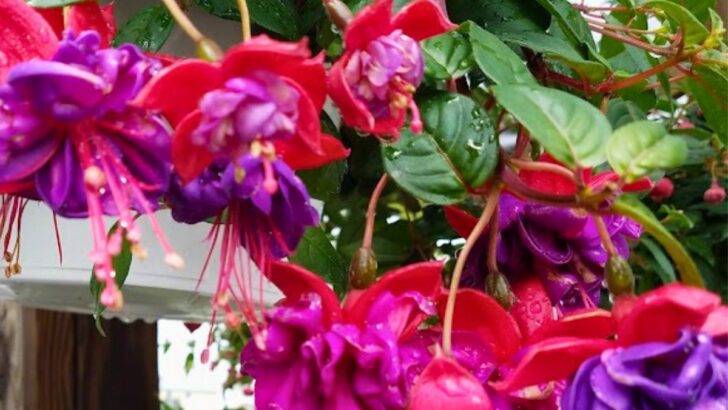Planting a garden in a shady yard can be a frustrating experience. As we walk through a nursery or garden center looking for shade-loving plants, many of the showy flowers we gravitate toward require a sunny location. But there are plenty of beautiful flowers for shade, too! Add some bright, cheerful color to your shade garden with some of the lovely flowering plants on this list.
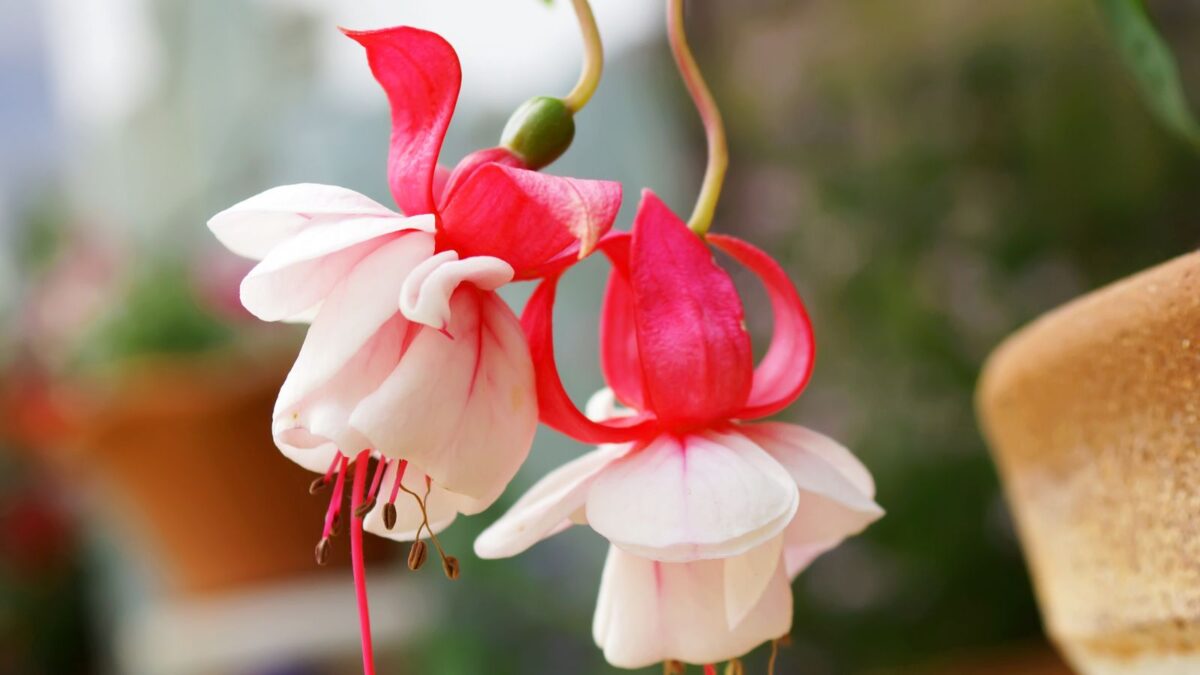
1. Fringed bleeding heart (Dicentra eximia)
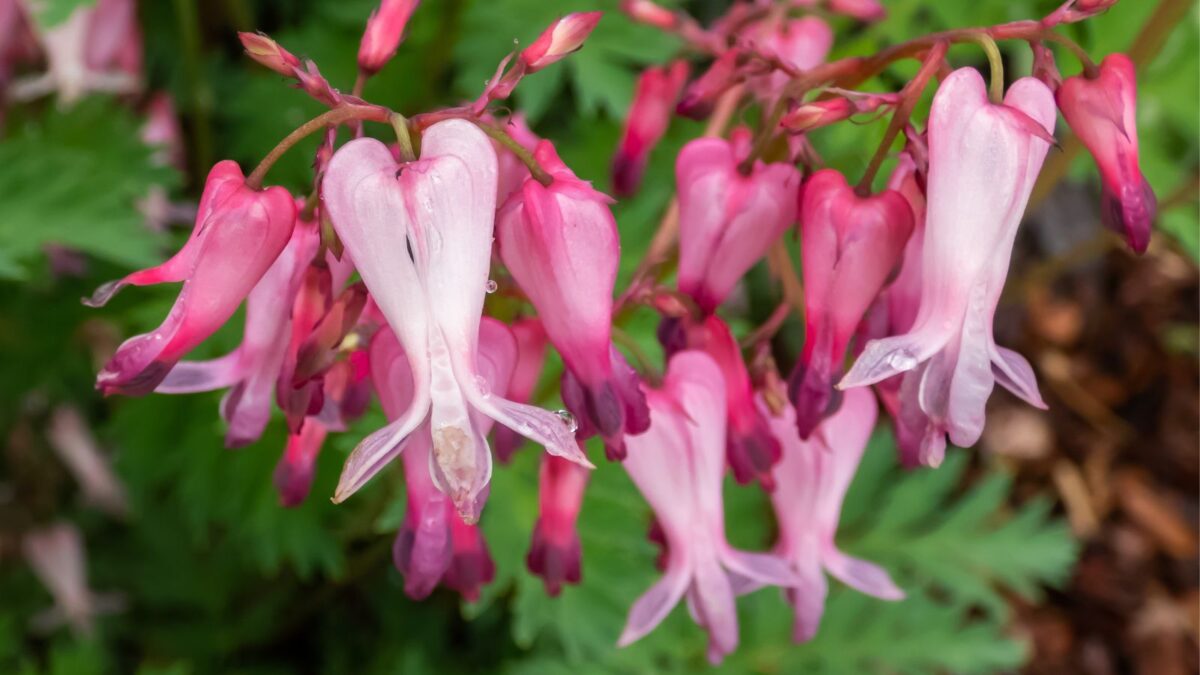
In spring, fringed bleeding heart produces clusters of dangling, pink, heart-shaped flowers for a stunning display. The blooming continues into summer and may even pick up again in fall. This perennial grows about 18 inches tall and has lovely ferny foliage as well.
A native of the Appalachian Mountains, fringed bleeding heart prefers rich, moist soil with good drainage in partial shade. It thrives in USDA hardiness zones 3-9.
2. Impatiens (Impatiens spp.)
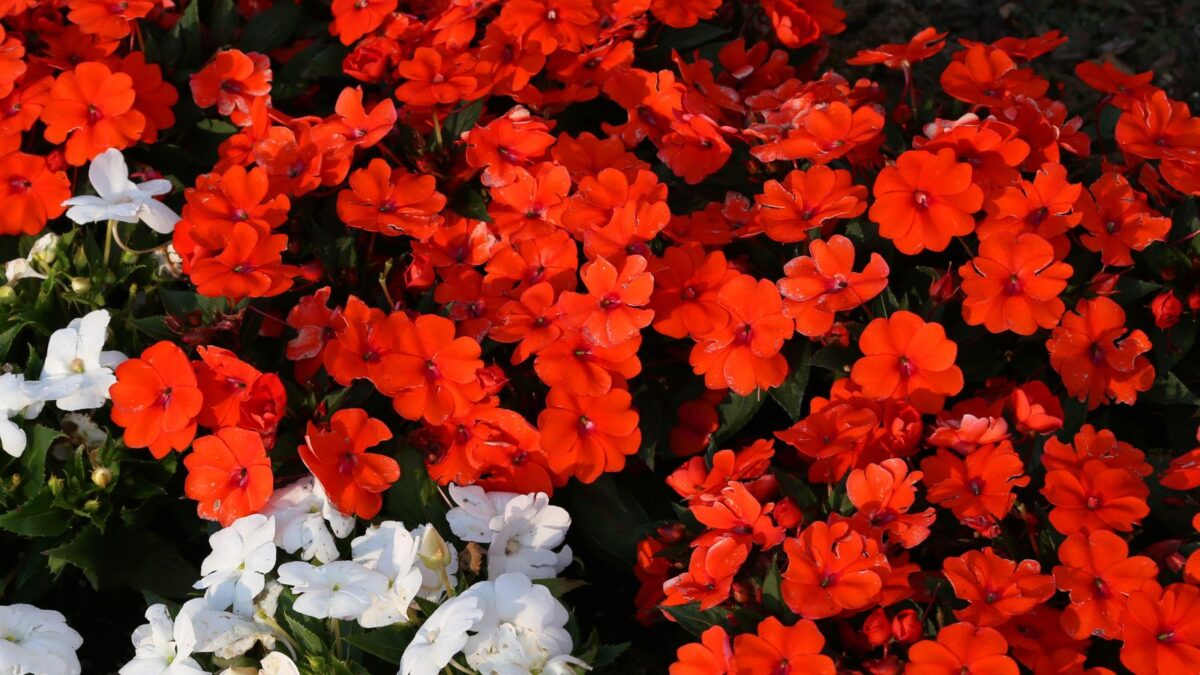
A popular bedding plant, impatiens bloom from late spring until first frost, providing a riot of color even in the shadiest locations. These annuals grow six inches to two feet high and come in shades of white, pink, purple, red, and orange.
Impatiens grow best in full to part shade, depending on the variety, and moist soil with good drainage.
3. Astilbe (Astilbe spp.)
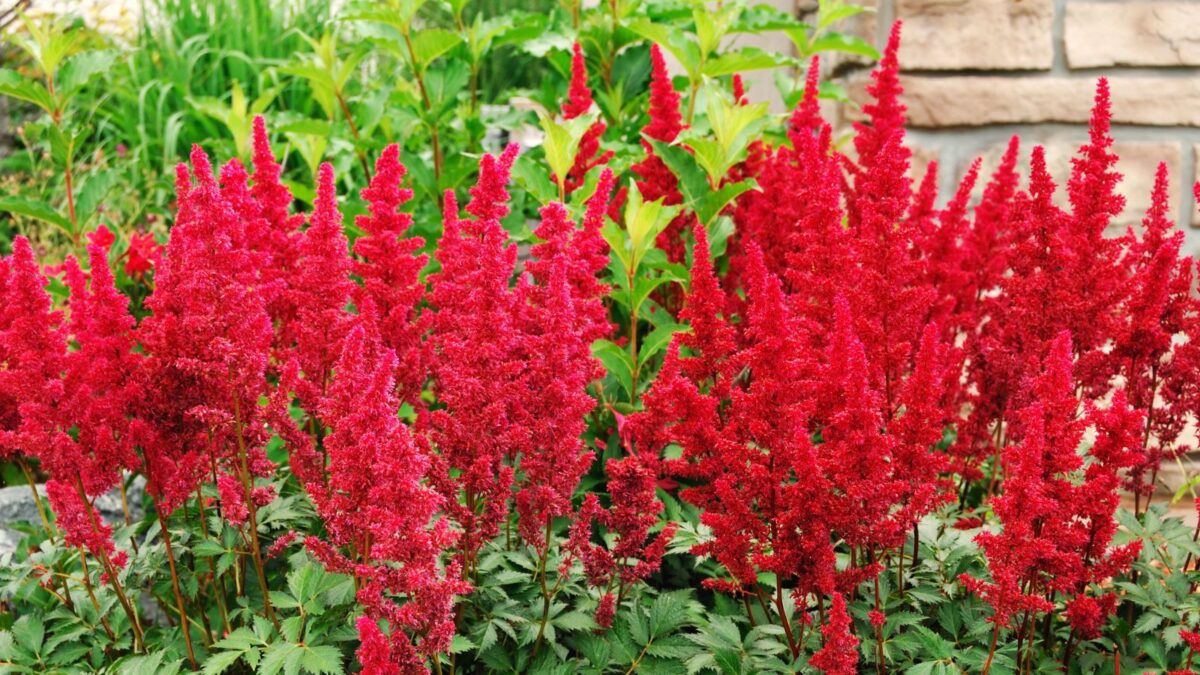
Astilbe blooms from late spring into summer or fall with tall plumes of vibrant flowers. These clumping perennials grow anywhere from two to six feet tall depending on the variety. Choose from the many colors of hybrid astilbe (A. x arendsii), or plant native false goat’s beard (A. biternata) with its feathery white plumes.
Hybrid astilbe grows in zones 3-9, while false goat’s beard is hardy in zones 5-8. Both appreciate moist, well-drained soil in part shade.
4. Siberian bugloss (Brunnera macrophylla)
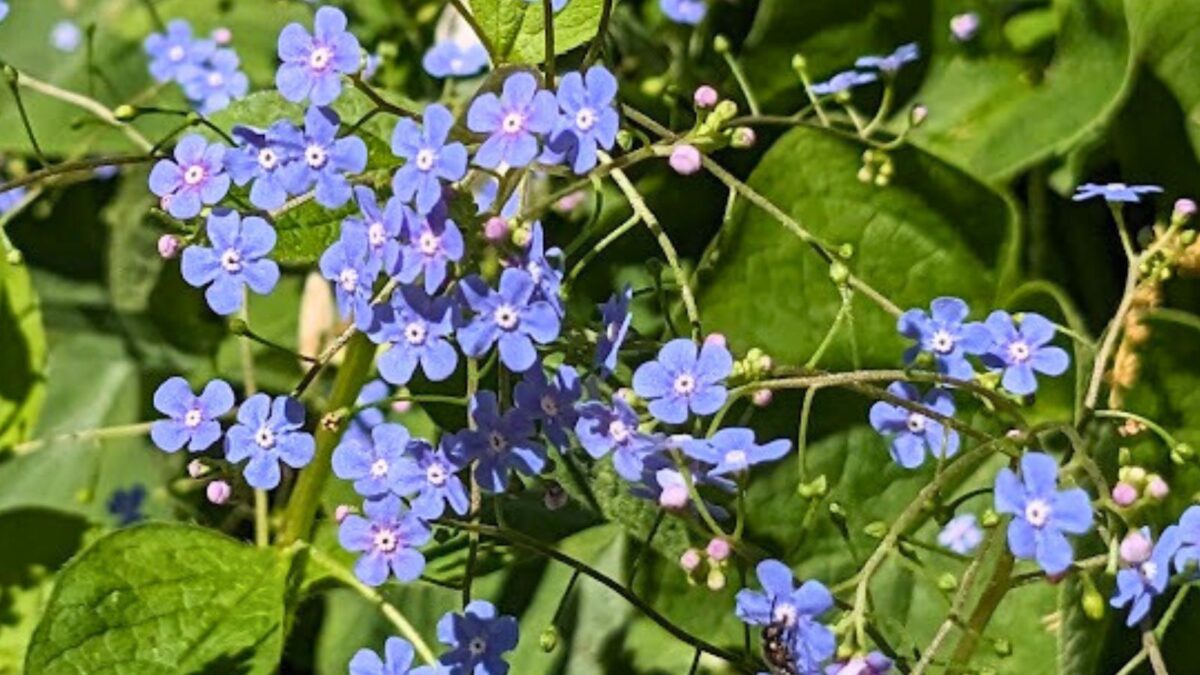
A perennial in the borage family, Siberian bugloss has cheery little blue flowers that bloom in clusters in spring. Its heart-shaped leaves and tendency to spread via rhizomes make it an attractive groundcover. This clumping, mounding plant grows just 18 inches tall.
Siberian bugloss grows in zones 3-8 and likes part to full shade and moist, well-drained soil.
5. Fuschia (Fuschia spp.)

Classic fuschia flowers have vivid pink sepals and bold purple or white center petals, though these dangling blooms also come in other colors. These stunning plants grow equally well in the ground, containers, or hanging baskets.
While most varieties of fuschia are grown as annuals in all but the warmest regions, hardy fuschia (F. magellanica) will overwinter down to zone 5. Most species prefer rich, moist soil with good drainage and part shade.
Tips for growing fuchsia plants.
6. Coral bells (Heuchera spp.)
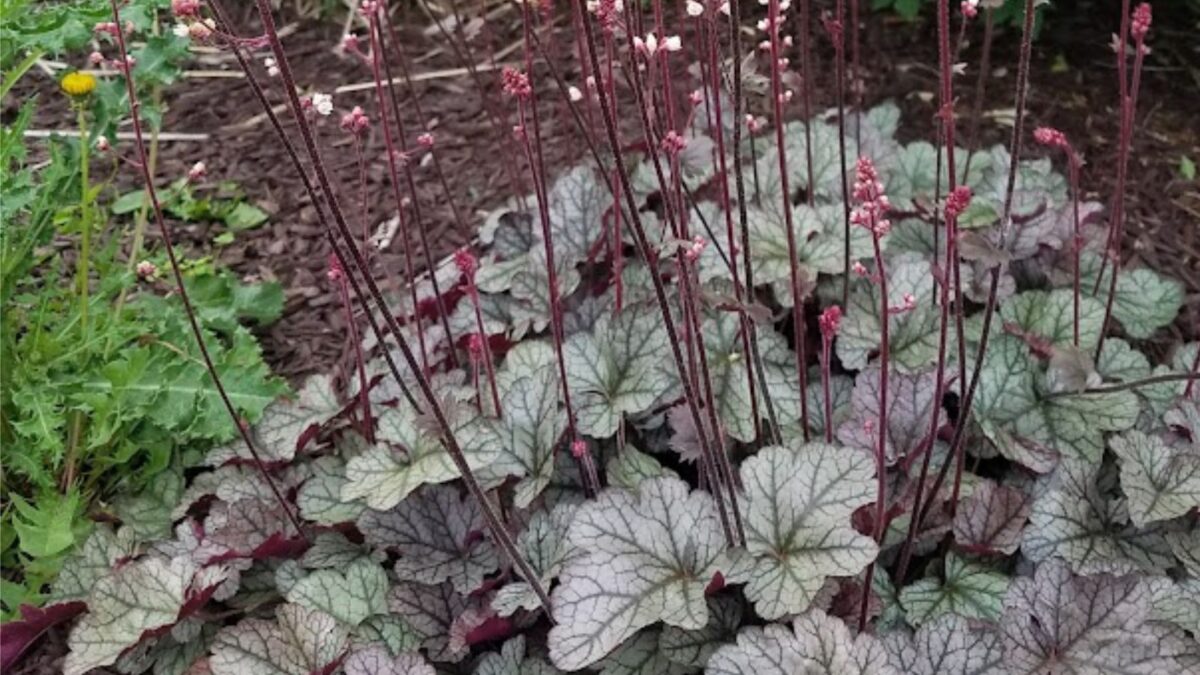
Coral bells are semi-evergreen to evergreen groundcovers with a tidy clumping habit. In late spring into summer, tall flowering stalks bloom with tiny white, pink, red, or orange bell-shaped flowers. These stunning plants also have colorful foliage in a range of unique hues.
Though some varieties develop the best foliage color in full sun, others prefer part shade. All like moist, organically rich soil with good drainage. Coral bells grow in zones 3-9.
Check out these 8 companion plants for coral bells.
7. Lungwort (Pulmonaria spp.)

Lungwort makes a lovely ground cover with its silvery white-spotted green leaves and slow rhizomatic spread. In spring, its bell-shaped flowers bloom in clusters, ranging in color from pink to blue, and sometimes white.
This unique plant prefers part to full shade and rich, moist soil with good drainage. Lungwort thrives in zones 3-8.
8. Woodland phlox (Phlox divaricata)
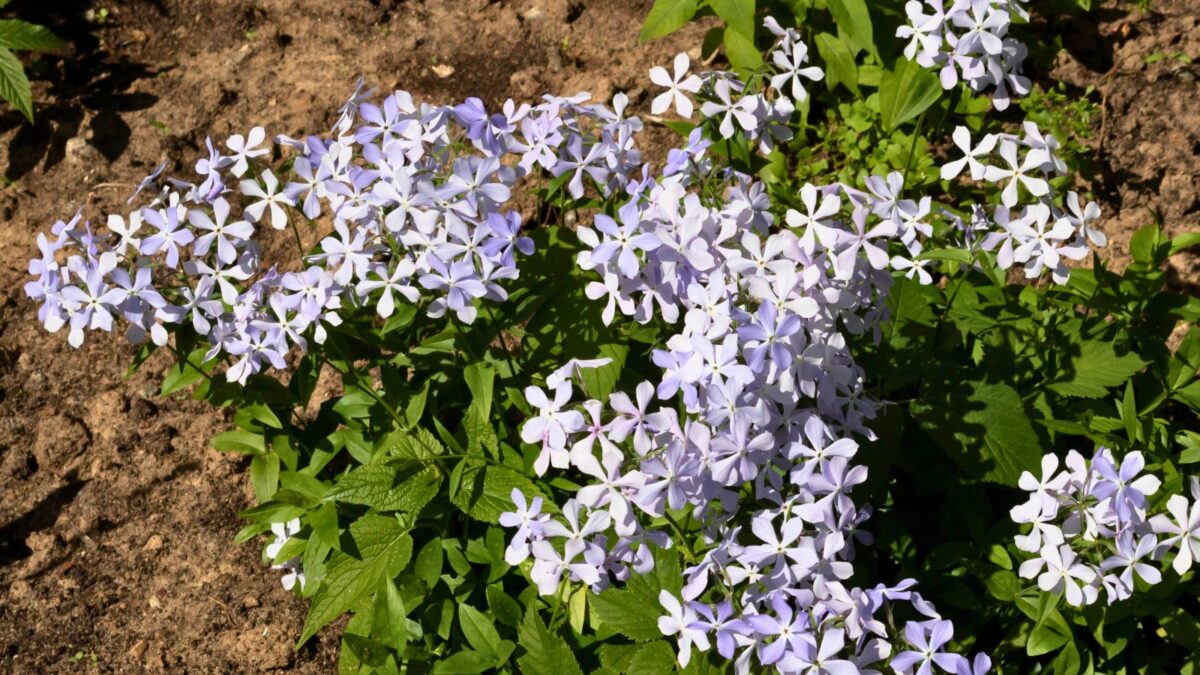
A beautiful native ground cover, woodland phlox grows six to 12 inches tall and forms spreading clumps. Masses of fragrant pink, lavender, or violet-blue flowers create a showy display in spring and early summer.
Woodland phlox grows in zones 3-8. It likes full to part shade and moist, well-drained soil rich in organic matter.
9. Dogtooth violet (Erythronium spp.)
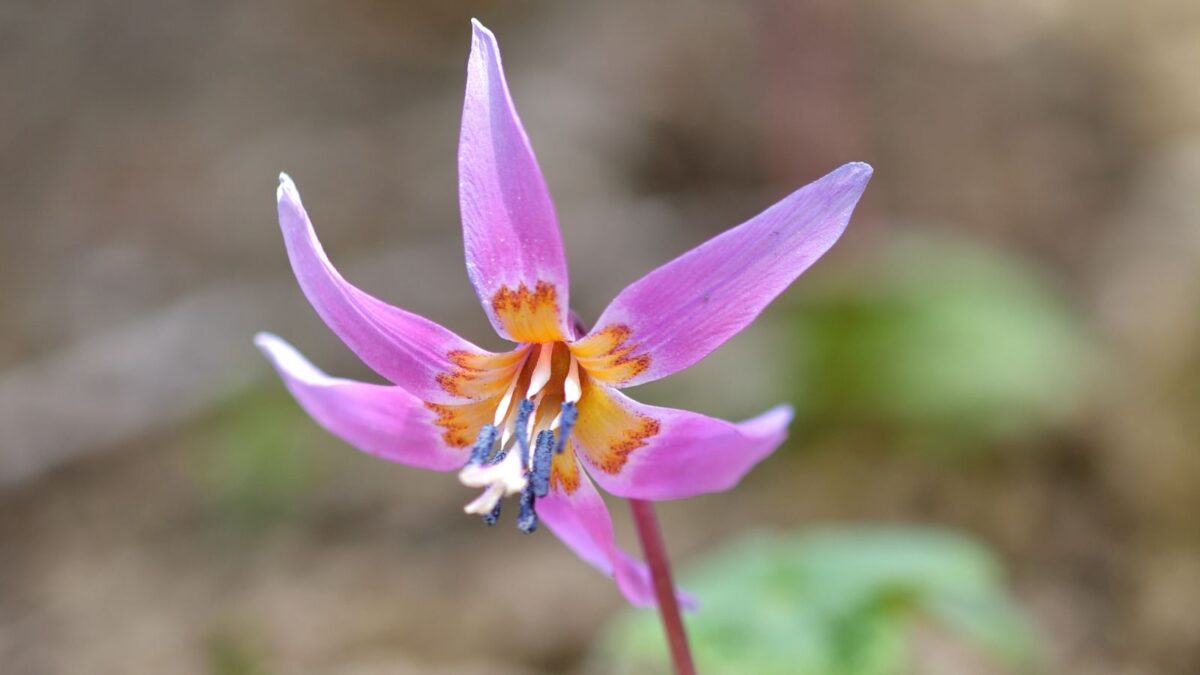
Dogtooth violet, or trout lily, is a spring ephemeral native to eastern North America. In early spring, each bulb produces one pair of basal leaves mottled green and purple-brown and sends up a single, nodding, lily-like flower in yellow or lavender. The entire plant goes dormant by summer.
Growing in zones 3-8, dogtooth violet prefers moist humus soil in part to full shade.
10. Wishbone flower (Torenia fournieri)
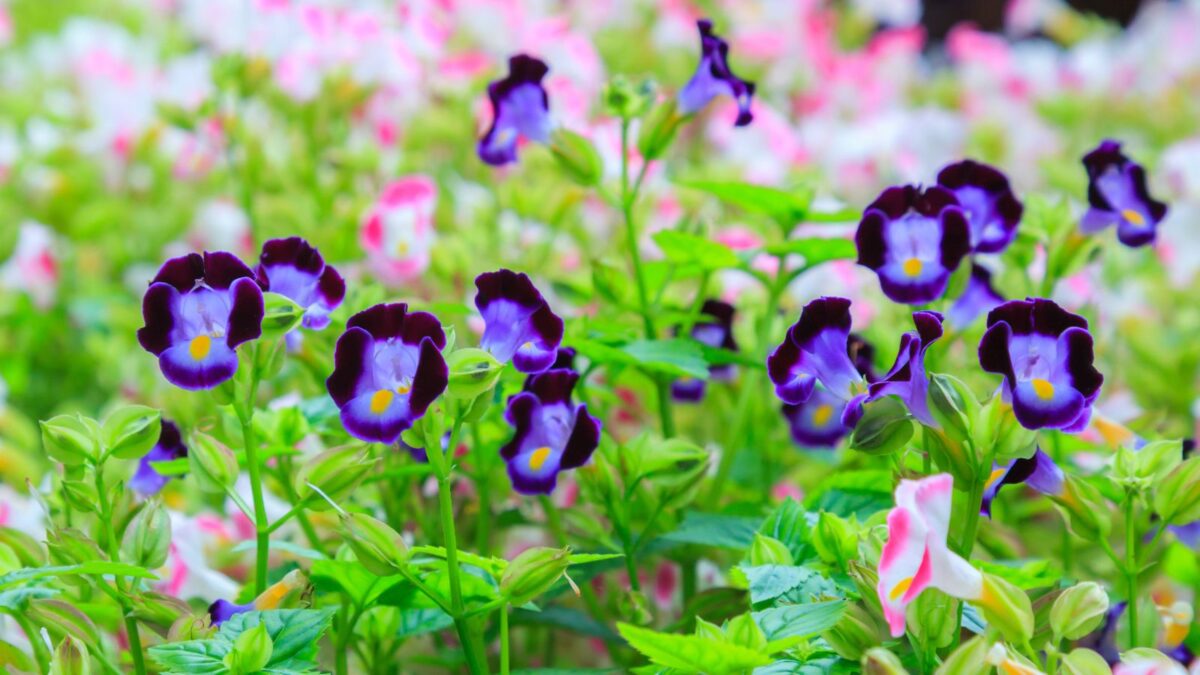
A popular annual, wishbone flower blooms all summer with striking two-toned, tubular flowers with a yellow mark at the throat. They are typically purple but also come in shades of pink, blue, and white, and they work equally well in containers and beds.
Wishbone flower likes dappled to full shade and rich, moist, well-drained soil. Pinching the plant back will help it retain a bushier shape.
Pretty Purple Perennials for Shade
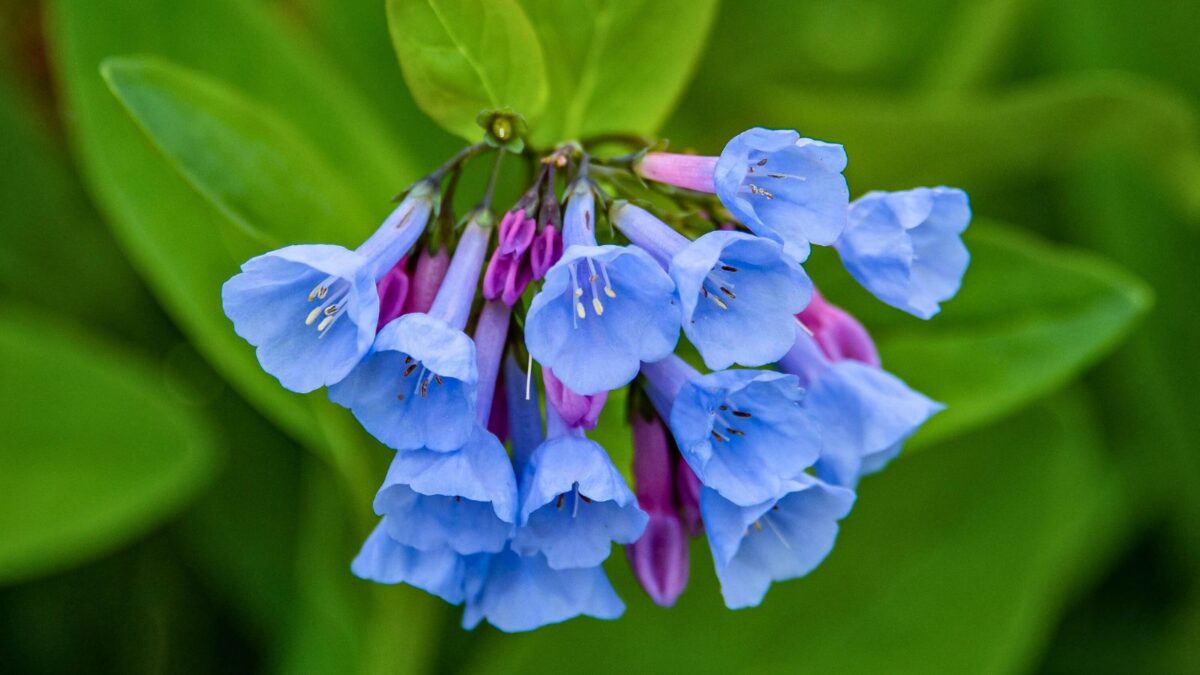
Add a touch of sophistication to your garden by adding a few purple shade perennials. These flowers are perfect for adding long-lasting color to a shaded area of your garden, and they will bloom year after year with proper care.
Stunning Blue Shade Perennials
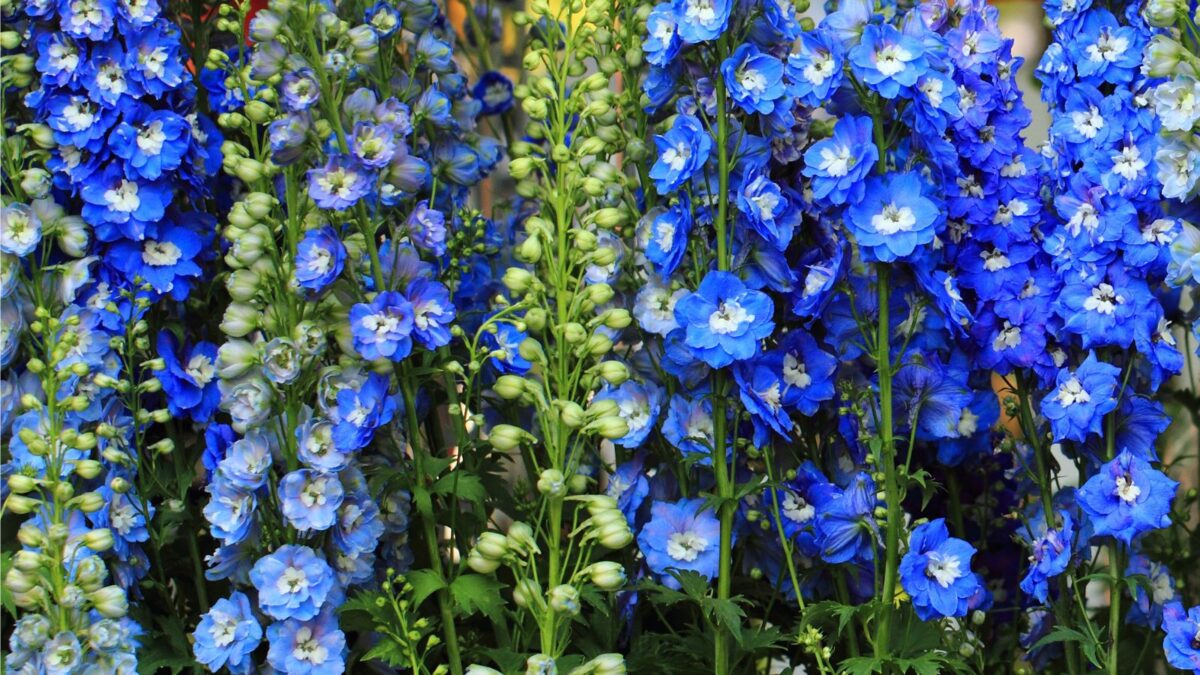
There aren’t many blue perennial flowers that grow in the shade, but some do well in partial shade.
Add some cool, relaxing colors to your garden by adding a few of these blue flowering perennials.

